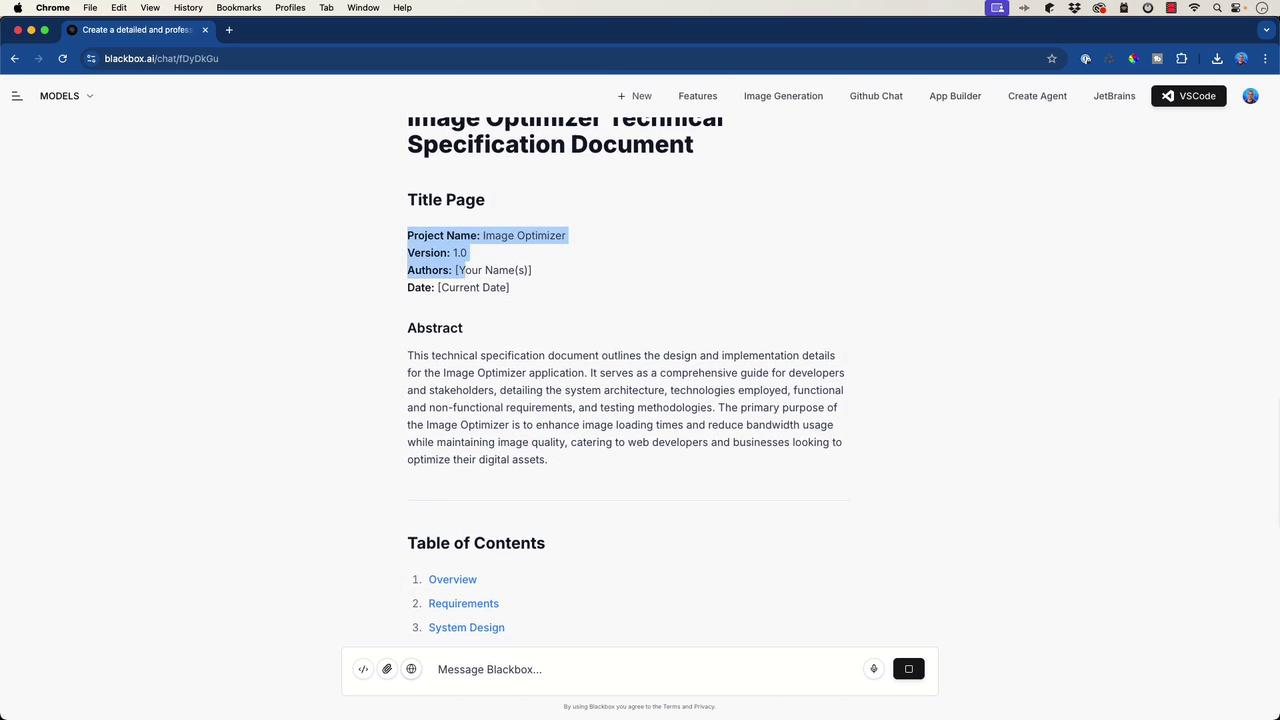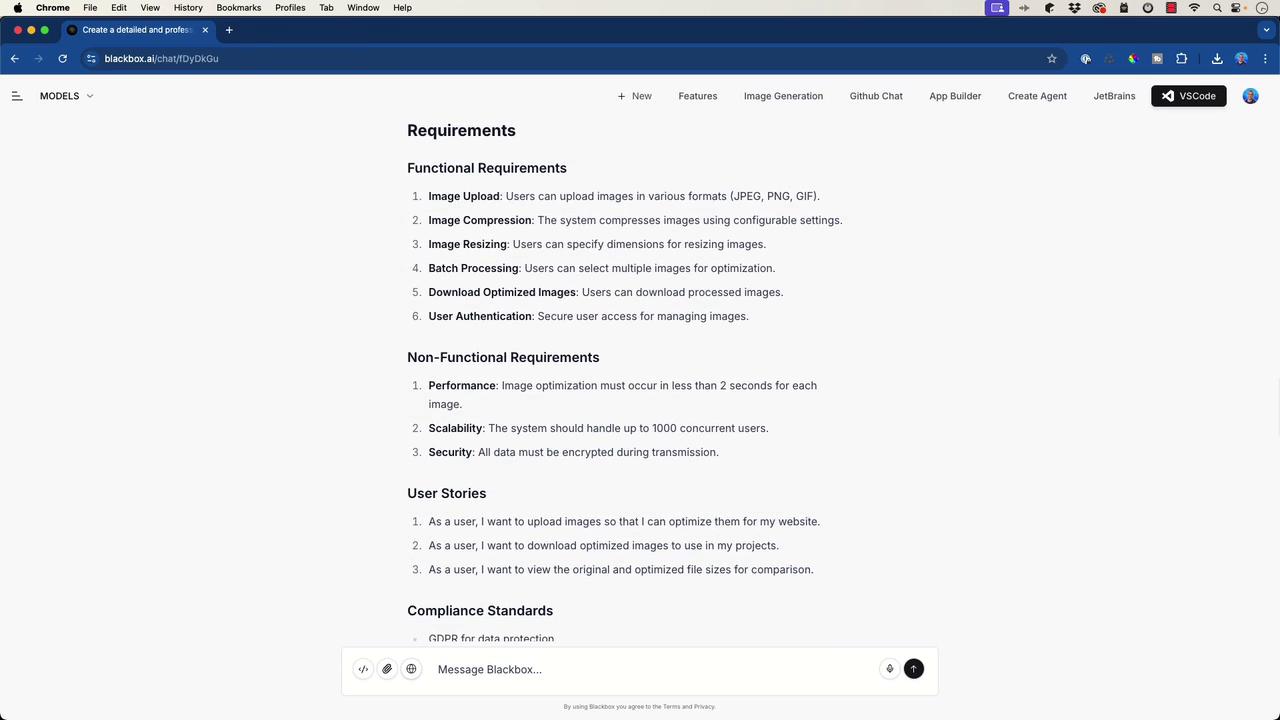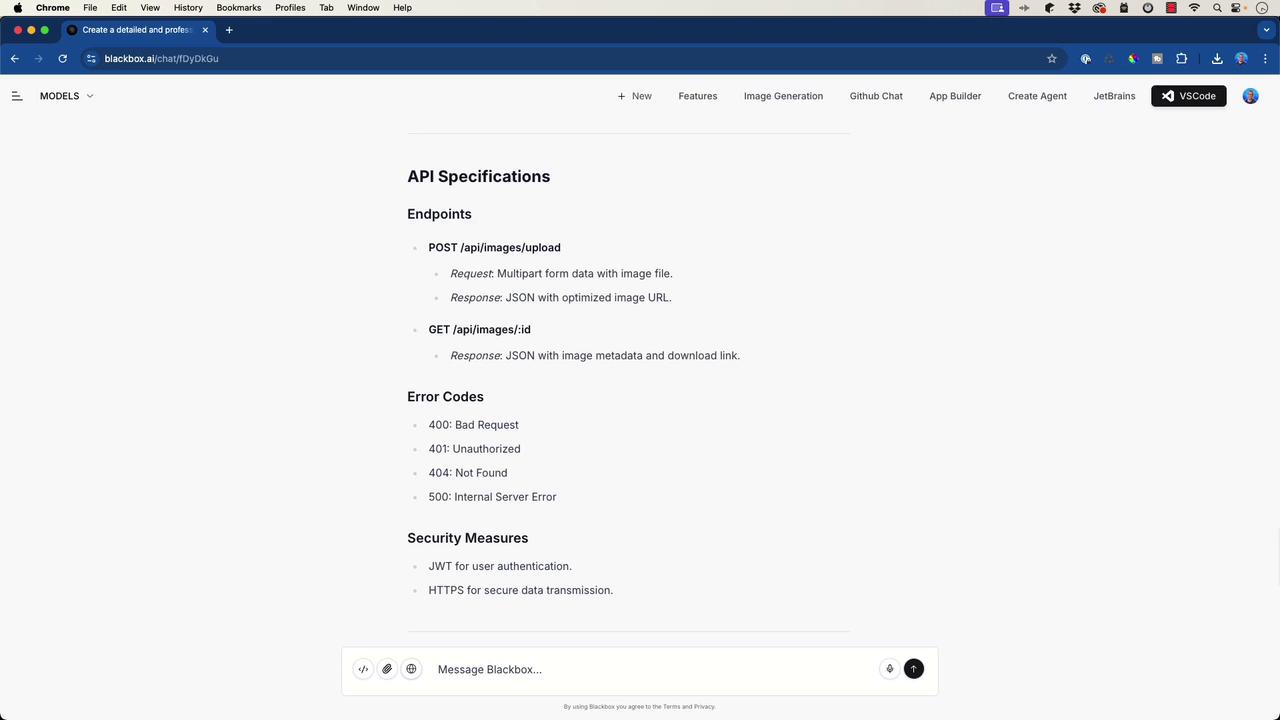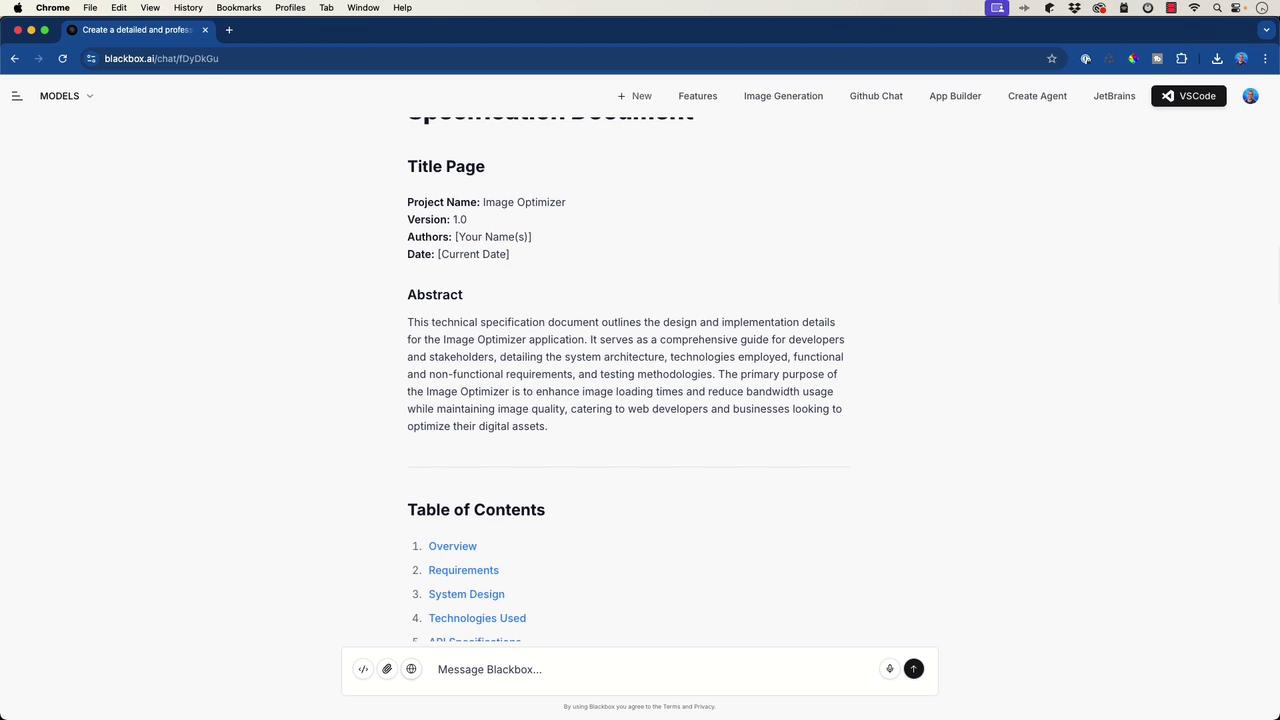AI-Assisted Development
Planning Phase
Creating a Technical Specification Document
In this lesson, we outline the process of creating a technical specification document for the "Image Optimizer" project. This document details the technical requirements, design, and implementation strategy for enhancing image loading speeds and reducing bandwidth usage. Although we simulate a process typical of a large organization, the goal is to build and refine this document as developers.
For this project, we use BlackboxAI—an AI tool designed to generate detailed technical documentation. The process starts with a comprehensive prompt (available in our GitHub repository) that instructs BlackboxAI to produce a professional technical specification document. This prompt covers system architecture, technological choices, design considerations, and implementation details, ensuring adherence to industry best practices. Additionally, the model is instructed to ask for clarifications if necessary.
Once the prompt is submitted, BlackboxAI generates the document with placeholders for elements such as the author’s name and the date.

Document Overview
The abstract section explains the purpose and scope of the image optimization project. The table of contents includes sections such as:
- Overview
- Target Audiences: Web developers, digital marketing teams, e-commerce businesses, and content creators.
- Functional Requirements
- Non-functional Requirements
- High-level Architecture
- Technology Stack and API Specifications
Functional and Non-functional Requirements
The initial functional requirements generated include:
- Users can upload images in various formats.
- The system compresses images using configurable settings.
- Users can specify dimensions for resizing images.
Warning
Image resizing is not supported by our application and will be removed.
- Batch processing allows users to select multiple images for optimization.
Warning
Batch processing is also not included in our current scope.
- Processed images can be downloaded easily.

The non-functional requirements specify that:
- Image optimization should be completed in less than two seconds.
- The system must support up to a thousand concurrent users.
- Data must be encrypted during transmission.
User Stories
The high-level user stories for the project are:
- As a user, I want to upload images to optimize them for my website.
- As a user, I want to download optimized images for my projects.
- As a user, I want to compare the original image with the optimized version to review changes in file size and visual quality.
Including a before-and-after comparison for both visual attributes and file size is a valuable feature that remains a priority.
Architecture and Technology Stack
The system architecture is structured around several key components:
- Frontend user interface.
- Backend for image processing and storage.
- A database for storing user data.
Since the project scope does not cover features such as a caching layer or a complex database, these sections will be adjusted accordingly.
Recommended Technologies
The initial recommendations for the technology stack include:
Frontend: React for its high performance, reusable components, and extensive ecosystem.
Backend: Node.js with Express, valued for its non-blocking I/O and efficient performance.
Image Processing: "Sharp" was initially suggested for speedy image resizing and compression.
Warning
Although "Sharp" was recommended, it will not be part of our implementation.
Additional technologies such as MongoDB and Amazon Simple Storage Service (Amazon S3) were mentioned. These will be removed as they do not align with our project requirements.
API Specifications
The technical specification document also includes a section on API specifications. This area details endpoints for image uploads, download links, and error codes. The initial draft includes authentication measures (e.g., JWT) and other security protocols. However, for our streamlined application, only HTTPS support will be retained, and extraneous details will be removed.

Refinement and Final Adjustments
While the AI-generated document provides a solid framework, it includes details that are not directly relevant to our project. Human review and refinement are essential to:
- Remove or adjust irrelevant features (e.g., image resizing, batch processing, MongoDB, Amazon S3).
- Correct discrepancies in performance targets and non-functional requirements.
- Tailor the document to accurately reflect the intended architecture and technology stack.
The refined document will serve as an accurate technical guide for building the Image Optimizer application.

Conclusion
The use of AI tools like BlackboxAI, ChatGPT, and Claude can significantly accelerate the drafting process of technical documentation. However, rigorous human review is crucial to ensure that the final document meets all technical requirements and accurately reflects the project scope. Through iterative refinement, we achieve a comprehensive technical specification that serves as a definitive guide for developing our Image Optimizer application. This document will be stored in our project repository as a critical reference for the development team.
Note
For more information on creating effective technical documentation, refer to Kubernetes Documentation and Terraform Registry.
Watch Video
Watch video content